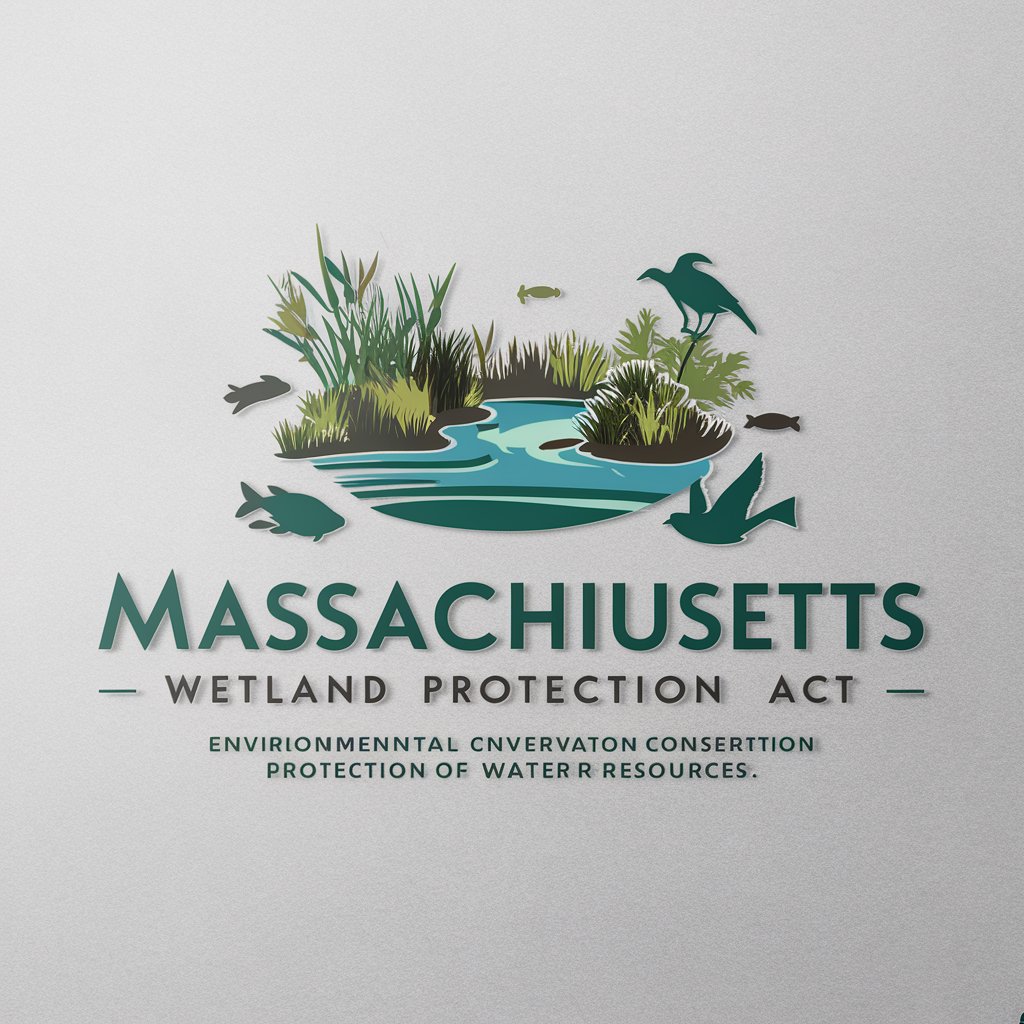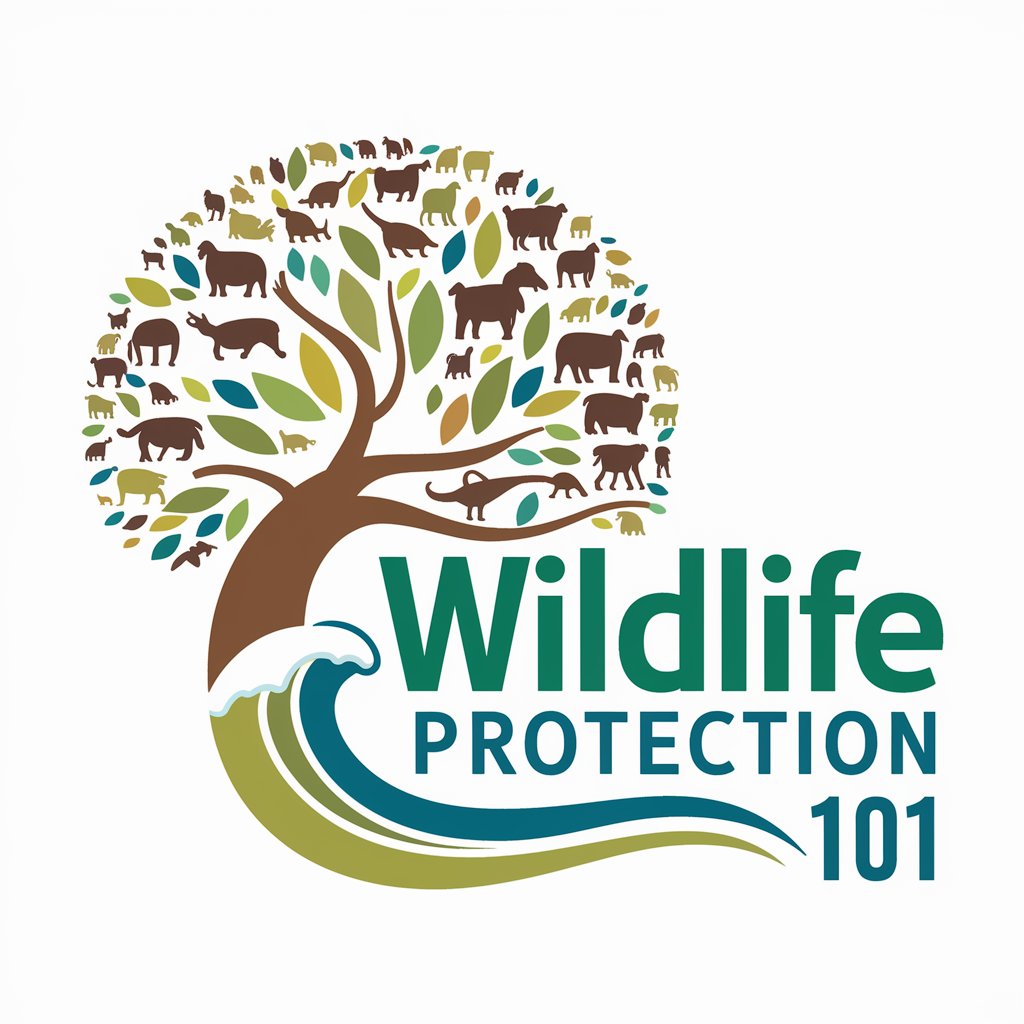Massachusetts Wetland Protection Act - Wetland Protection Guide

Welcome! Let's explore wetland protection together.
Navigate wetland regulations with AI
Explain the importance of wetland protection as outlined in the Massachusetts Wetland Protection Act.
Describe the key areas and activities regulated under the Massachusetts Wetland Protection Act.
Summarize the purpose and objectives of the Massachusetts Wetland Protection Act.
What are the general provisions and procedures established by the Massachusetts Wetland Protection Act?
Get Embed Code
Introduction to Massachusetts Wetland Protection Act
The Massachusetts Wetland Protection Act (WPA), governed by regulations set forth in 310 CMR 10.00, is a comprehensive legislative framework designed by the Massachusetts Department of Environmental Protection (MassDEP). Its primary aim is to safeguard and manage wetlands and water resources across the state. The Act empowers local conservation commissions and the MassDEP to regulate activities that may impact wetlands, ensuring a balance between development needs and environmental conservation. A key element of the WPA is its jurisdiction over various wetland resource areas, including freshwater wetlands, coastal wetlands, and land subject to flooding, among others. By regulating activities such as dredging, filling, and altering these areas, the Act plays a crucial role in protecting public water supply, groundwater, flood control, storm damage prevention, pollution prevention, and conservation of land containing shellfish, fisheries, and wildlife habitat. Powered by ChatGPT-4o。

Main Functions of the Massachusetts Wetland Protection Act
Regulation and Permitting
Example
A developer seeking to construct a residential complex near a coastal wetland must file a Notice of Intent with the local conservation commission, demonstrating how the project will comply with the Act's standards to avoid, minimize, or mitigate wetland impacts.
Scenario
This function ensures that any proposed project within jurisdictional areas does not harm the wetland's ecological integrity. The process involves public hearings, review of environmental impacts, and issuance of orders of conditions that specify permissible activities.
Enforcement and Compliance
Example
In cases where unauthorized wetland alterations are detected, such as the illegal dumping of fill material in a freshwater wetland, the Act authorizes the issuance of enforcement orders to halt the activity and restore the affected area.
Scenario
This function enables conservation commissions and the MassDEP to enforce the Act's provisions actively. Offenders may be required to restore damaged resources and could face penalties. This ensures that wetland areas are preserved and restored following disturbances.
Education and Outreach
Example
The MassDEP and local conservation commissions conduct workshops and provide online resources to educate landowners, developers, and the general public about the importance of wetlands and the requirements of the Wetland Protection Act.
Scenario
Through education and outreach efforts, stakeholders become more aware of their responsibilities and the significance of wetlands in ecological balance and flood management, promoting voluntary compliance and conservation initiatives.
Ideal Users of Massachusetts Wetland Protection Act Services
Developers and Landowners
Individuals or entities planning to undertake construction or other activities near wetland areas. They benefit from understanding the permitting process, regulatory requirements, and mitigation measures to comply with environmental standards.
Environmental Consultants
Professionals who advise on environmental impact assessments, compliance strategies, and conservation planning. They utilize the Act to guide their recommendations on sustainable development practices and environmental stewardship.
Local Government Officials
Officials, particularly in conservation commissions, who are responsible for enforcing the Act at the local level. They benefit from clear guidelines on reviewing and approving projects, issuing permits, and enforcing compliance.
Environmental Advocates and Non-Profit Organizations
Groups and individuals focused on environmental conservation and advocacy. They use the Act to understand legal protections for wetlands, participate in public hearings, and advocate for the preservation of sensitive habitats.

Guidelines for Using the Massachusetts Wetland Protection Act
Start your journey
Initiate your exploration of the Massachusetts Wetland Protection Act by visiting yeschat.ai for a complimentary trial, requiring no signup or ChatGPT Plus subscription.
Understand the scope
Familiarize yourself with the Act's jurisdiction, covering various wetlands, waterways, and adjoining land areas, as outlined in Sections 10.01 to 10.60 of the Act.
Prepare your documentation
Collect necessary information and documentation regarding the proposed work within the wetlands, including details on how the project will adhere to or enhance the protection of the wetland's interests.
Submit a Notice of Intent (NOI)
Complete and submit a Notice of Intent to the local conservation commission, detailing the work to be done, its impact, and measures for minimizing environmental effects.
Engage in the public hearing process
Participate in the public hearing process to present your project, address any concerns, and modify your plans as needed to comply with the Act's standards for protecting wetland resources.
Try other advanced and practical GPTs
Wildlife Protection 101
Empower your conservation journey with AI.

Protection by Chris
AI-powered Celebrity Protection Expertise

Environmental protection
Empowering sustainable decisions with AI.

Antivirus Protection
Empowering security with AI vigilance.

Heartfelt Protection
Empathetic AI for Emotional Wellness

Cathodic Protection
Guarding metals against corrosion with AI

Executive Protection Expert
AI-powered Executive Protection Expertise

LECTRON - ddos protection guidance & advice
Shielding your game servers from DDoS threats, effortlessly.

IT-Security & Data Protection
Empowering Security with AI

Pitbull Dog
Bringing a virtual Pitbull to life with AI

Hot Dog Not Hot Dog
Discover if it's a hot dog – AI-powered identification

Dog Rescue
Empowering rescue with AI support.

Questions & Answers about the Massachusetts Wetland Protection Act
What types of areas are protected under the Massachusetts Wetland Protection Act?
The Act protects various areas including wetlands, banks, beaches, dunes, salt marshes, floodplains, and riverfront areas, aiming to preserve their environmental functions such as flood control, groundwater supply protection, and habitat for wildlife.
How does one determine if a project requires filing a Notice of Intent (NOI) under the Act?
A project requires an NOI if it involves work within or near protected wetland areas that might alter them. This includes construction, excavation, and activities that change drainage, landscape, or natural water flow.
What are the general performance standards for work in protected areas?
Performance standards vary by resource area but generally require minimizing impacts to the wetland's interests, such as maintaining water quality, preventing flood damage, and protecting wildlife habitat.
Can agricultural activities be exempt from regulation under the Act?
Certain agricultural practices may be exempt if they're conducted on land in agricultural use, following best management practices to avoid wetland alteration, subject to conditions outlined in the Act's provisions for agriculture.
What is the process for appealing a decision made by a local conservation commission?
If aggrieved by a conservation commission's decision, one can appeal by filing a Request for a Superseding Order of Conditions with the Department of Environmental Protection, which will review the appeal and issue a decision.
